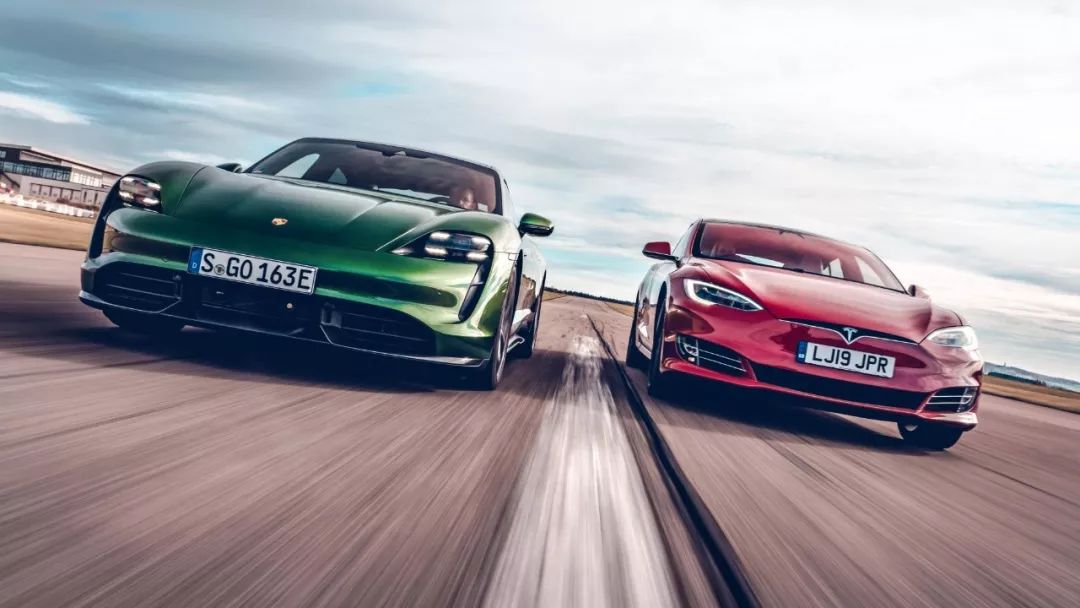On October 30th, the latest episode of the long-running BBC car show Top Gear was released on video website YouTube. Perhaps Top Gear didn’t expect that this episode would spark such a wide controversy, but with the subsequent follow-up of Tesla CEO Elon Musk and the Top Gear official website, an ultimate showdown became inevitable.
The name of the episode is clear in meaning: “Porsche Taycan Turbo S vs Tesla Model S: DRAG RACE, FULL REVIEW AND VMAX”, and the subtitle of “¼ mile acceleration, comprehensive comparison and maximum speed” makes the purpose even clearer.
Without further ado, let’s take a look at the two car models that are being compared today. Simply put, this is a duel between the two most powerful pure electric vehicles in the world today.
In short, when it comes to the 0-60 mph acceleration, 0-100 mph acceleration, ¼ mile acceleration and maximum speed, “Model S loses everything”. Host Jack Rix even used this phrasing: “Tesla has been dethroned”.
However, this video immediately sparked huge controversies among the Tesla owner community, with some questioning the authenticity of the 0-60 mph acceleration result.
According to data from Porsche and Tesla’s official websites, the Porsche Taycan Turbo S achieved a time of 2.6 seconds for the 0-60 mph acceleration, while the Tesla Model S achieved 2.4 seconds.
Under the exact same conditions of weather, air density, and road conditions, Porsche achieved the time of 2.61 seconds as per official website data, while the Tesla Model S was slower by 0.2 seconds.
Of course, it cannot be ruled out that the objective conditions at the time happened to be unfavorable for the Model S performance. But soon, an even bigger bug surfaced.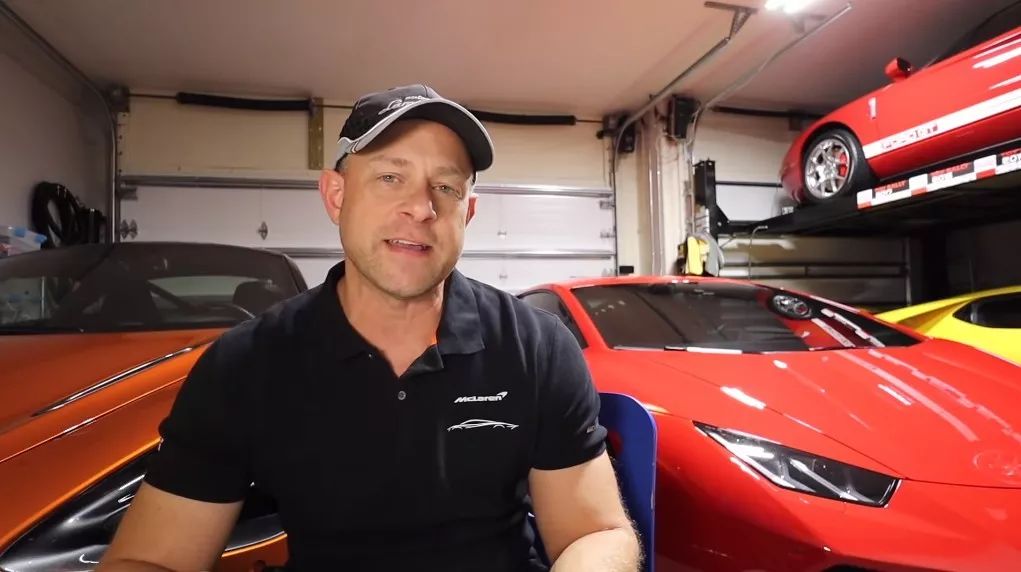
Brooks Weisblat, a well-known racing driver and host of DragTimes, discovered that the four performance metrics of Model S in this race are exactly the same as those in the video “Tesla Model S P100D vs. Mercedes AMG E63 S” produced by Top Gear in 2017.
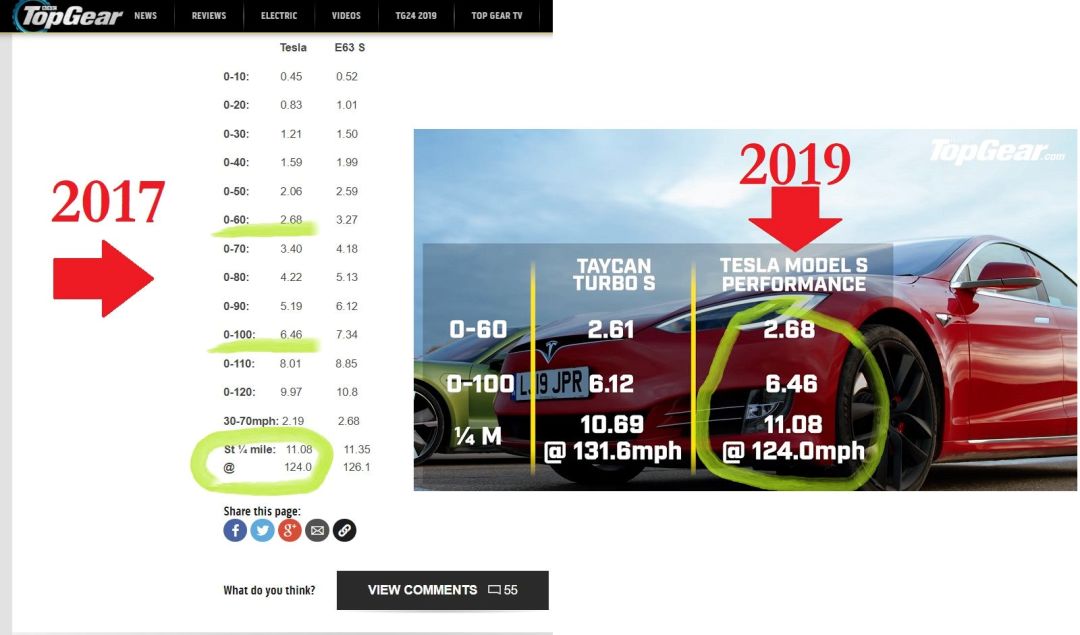
While it could be reasonable for similar models to have similar results in different testing conditions, having the exact same performance metrics, down to two decimal places, is unfathomable. What’s more awkward is that the car in question is a Tesla. It is difficult to believe that the 2017 Model S P100D and the 2019 Model S Performance would perform identically in extreme performance testing – after the video was released, many Tesla owners provided feedback that under controlled variables (weather conditions, road conditions, tires, etc.), the Model S Performance always outperforms the Model S P100D.
The real problem with Top Gear using the 2017 data was that the car used in the video has a code name Raven.
On April 24th, Tesla announced that the production of the Raven Model S had begun. Model S Raven’s front motor has been changed from the old induction motor to an “optimized permanent magnet motor.” In addition, the new Model S is equipped with the latest generation of SiC silicon electronic components and improved lubrication, cooling, bearings and wheel designs.
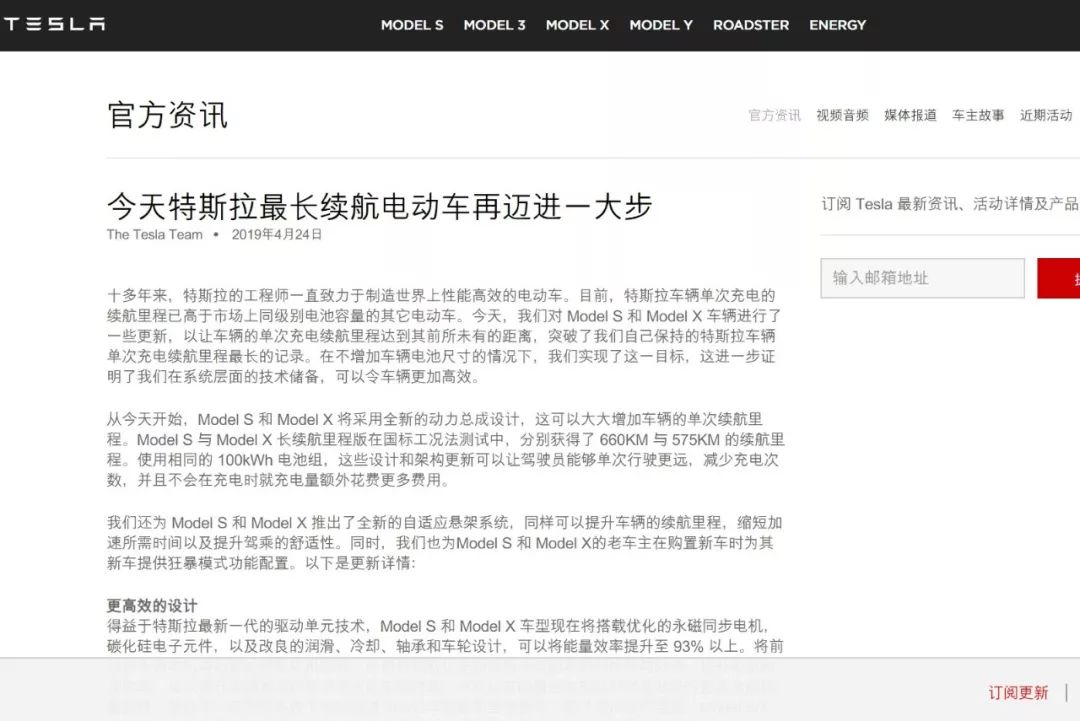
Here’s the key point:
The new powertrain will provide unparalleled performance and efficiency. In addition to adding range, increasing torque and power for Model S/X, accelerate to 100 km/h time for long-range version will drop to better performance.It is a fact that the limit performance of the Model S Raven surpasses that of the Model S P100D. Therefore, if Top Gear really used outdated data, it would be extremely unfair to Tesla.
Yesterday, Tesla CEO Elon Musk retweeted that the Drag Racing Times analysis was correct and Top Gear had an issue.
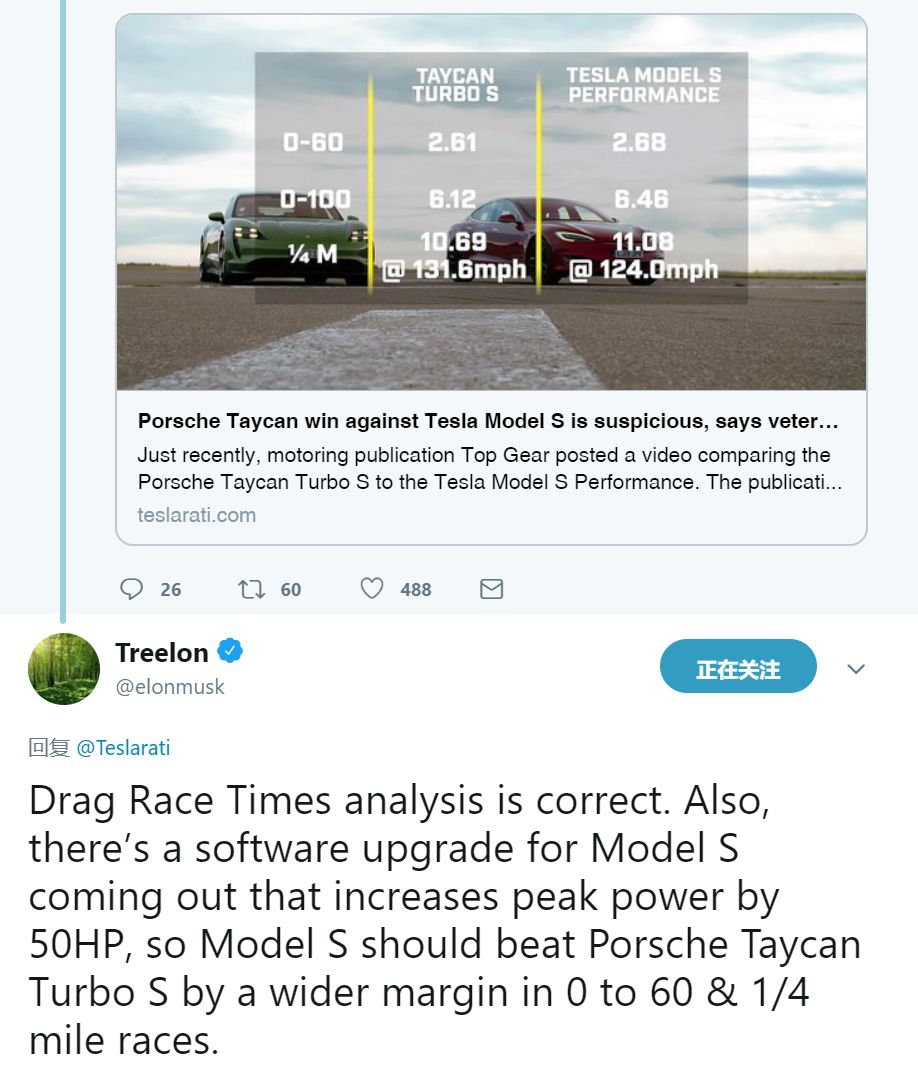
As doubts grew louder, Top Gear released a response on their official website, which is translated below.
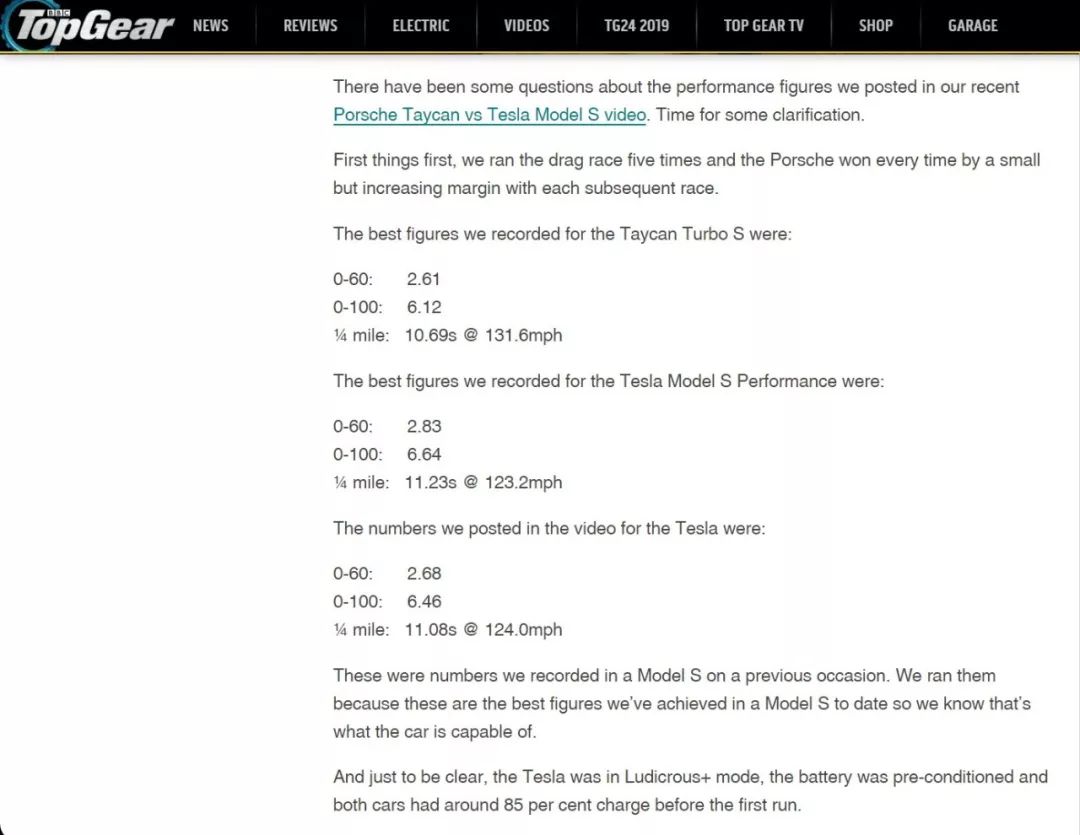
About some questions raised by audiences on our recent Porsche Taycan VS Tesla Model S video about the performance data. It’s time to clarify.
Firstly, we made five 1/4 mile drag races, in every race, Porsche won by a small but gradually increasing margin.
Here are the best results we recorded for Taycan Turbo S:
– 0-60: 2.61 s
– 0-100: 6.12 s
– 1/4 mile: 10.69 s @ 131.6 mph
Here are the best results we recorded for the Tesla Model S Performance:
– 0-60: 2.83 s
– 0-100: 6.64 s
– 1/4 mile: 11.23 s @ 123.2 mph
The data we released in the video for Tesla was:
– 0-60: 2.68 s
– 0-100: 6.46 s
– 1/4 mile: 11.08 s @ 124.0 mph
The reason we used the data we recorded in the Model S before is that these are the best results we’ve achieved on this car and we know its limits.It needs to be clarified that the Tesla was in Ludicrous + mode and the battery had been pre-conditioned. Prior to the first run, the battery levels on both cars were around 85%.
Impressive.
According to Top Gear’s comments, Porsche seems to be angry with Top Gear for favoring Tesla. Top Gear has tested the Model S Raven five times, and its best performance in those five times was less than that of the 2017 Model S P100D.
Tesla owners were crying foul, only to be punched in the face.
But it doesn’t end there. Just when one thought the worst was over, Top Gear dropped this bombshell: “It needs to be clarified that the Tesla was in Ludicrous + mode and the battery had been pre-conditioned.” This statement seems to have sealed the fate of Tesla owners who were trying to find reasons to justify their car’s inferior performance. The underlying message from Top Gear seemed to be: “Stop looking for reasons – the Model S is simply not good enough.”
Who would have thought that it was this statement that would get Top Gear into even more hot water?
Eagle-eyed Tesla owners noticed something strange about the center console, instrument panel, and rearview mirror of the Model S shown in the video (at 1:06-1:08).
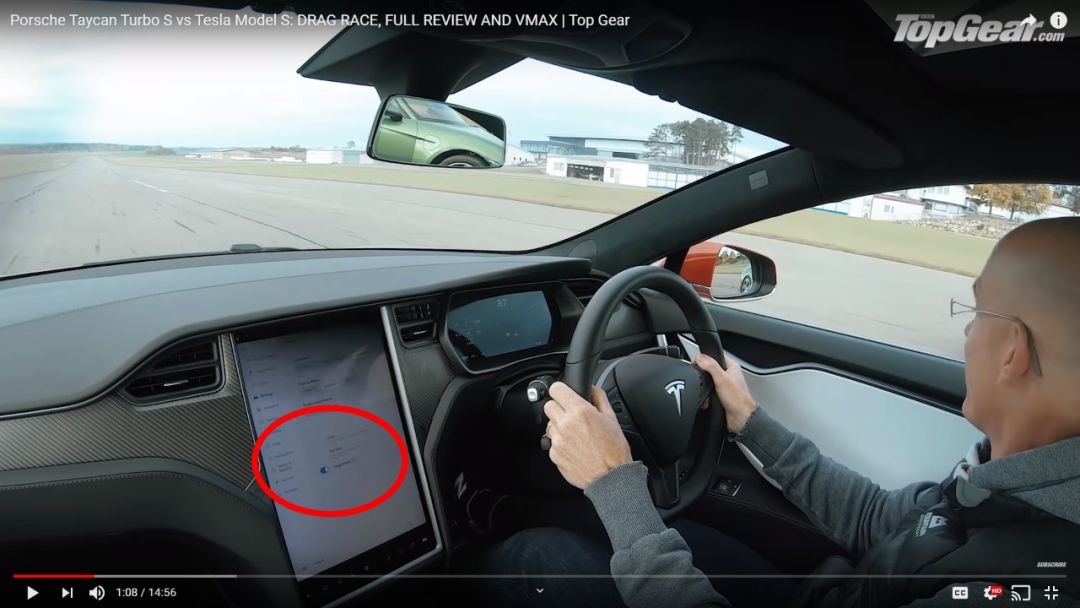
The center console was in driving mode, and at the bottom of the driving screen, it could be seen that the Model S was in range mode.
What is “range mode”?
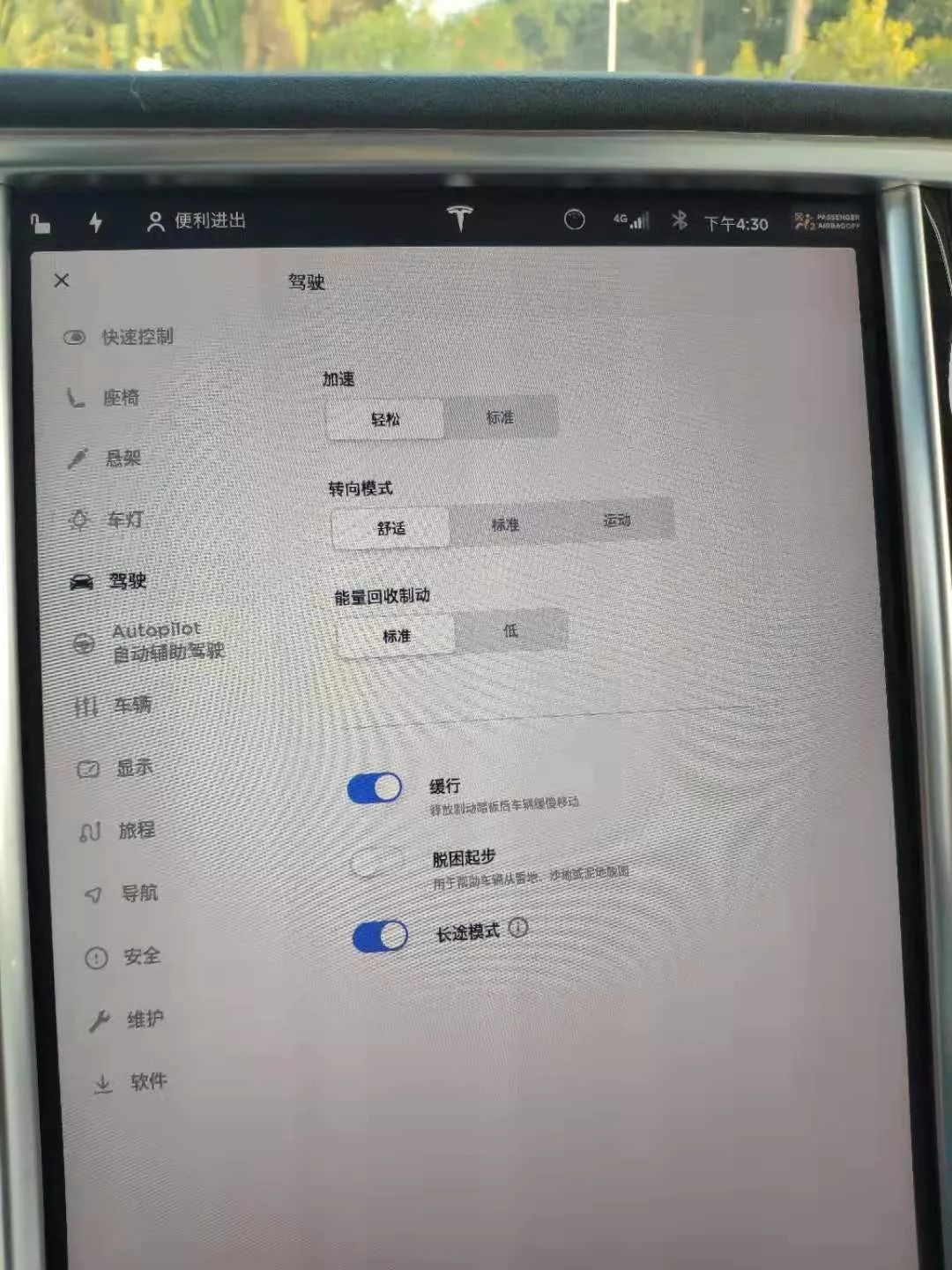
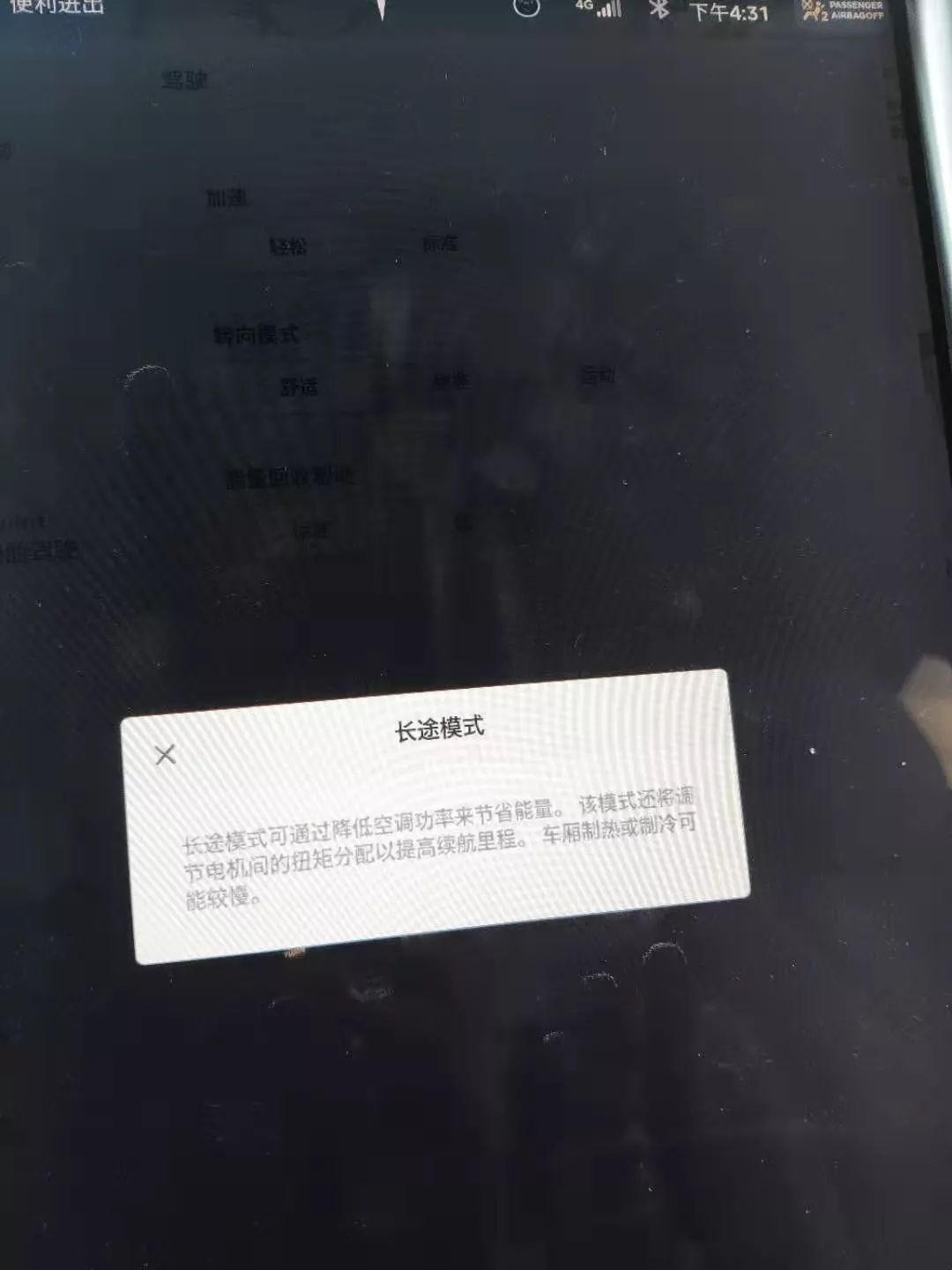
Tesla owner @SunnyOrange explained that “range mode lowers air conditioning power to save energy. this mode also adjusts torque distribution between the motors to improve range. It may take longer to heat or cool the cabin.”
Tesla’s official explanation is that “Range Mode saves energy by reducing the power used by the climate control system. It also adjusts torque distribution between the motors to improve range. Cabin heating or cooling may be slower.”Let’s clarify things a bit. After engaging the “long-range” mode, Tesla will shut down the rear inductive motor and solely rely on the front permanent magnet motor to drive the vehicle under low-power conditions. In addition, the power of the PTC heater and air conditioning compressor is limited to between 0-50% (0-3 kW) to achieve energy-saving and longer range goals.
So, why did Top Gear engage the “long-range” mode during the quarter-mile drag race? Were they worried that the Model S wouldn’t be able to make it to the finish line?
The more important information can be found on the dashboard and rearview mirror. First, if Tesla has engaged “Ludicrous Mode”, the battery’s temperature information should be displayed on the left side of the dashboard in real-time. However, from the video of the dashboard, it seems they have not enabled “Ludicrous Mode”.
You might argue that you don’t have a Model S and don’t know what the dashboard looks like in “Ludicrous Mode”. Then the following details will prove that Top Gear was lying.
From 1:06 to 1:08, the speedometer on the Tesla dashboard jumped from 53 mph to 87 mph, and the Taycan Turbo S stayed behind the Model S in the rearview mirror for a full three seconds.
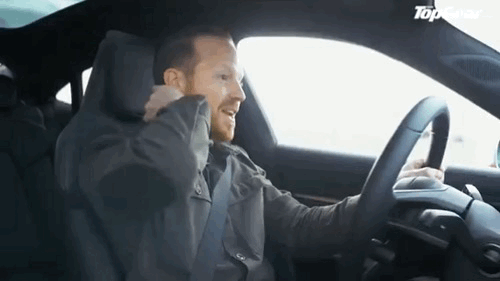
The details can be viewed in 1080p on YouTube.
Wait, did you notice something wrong?
Using the same starting line, the Porsche’s 0-60 mph acceleration time was 2.61 seconds, while Tesla’s was 2.68 seconds. How could the faster car be behind the slower car in the rearview mirror?
Now we can conclude that we don’t know what Top Gear’s motivation was. We don’t even know if their claim of conducting five tests was true. But we do know that Porsche won by weaving lies, while Tesla was unfairly disqualified.
As predicted at the beginning of this article, an inevitable duel between Model S Raven and Porsche Turbo S has emerged among various auto media and Tesla owners. You may wonder, can Model S win for sure?
Now let’s bring Elon Musk onto the scene.
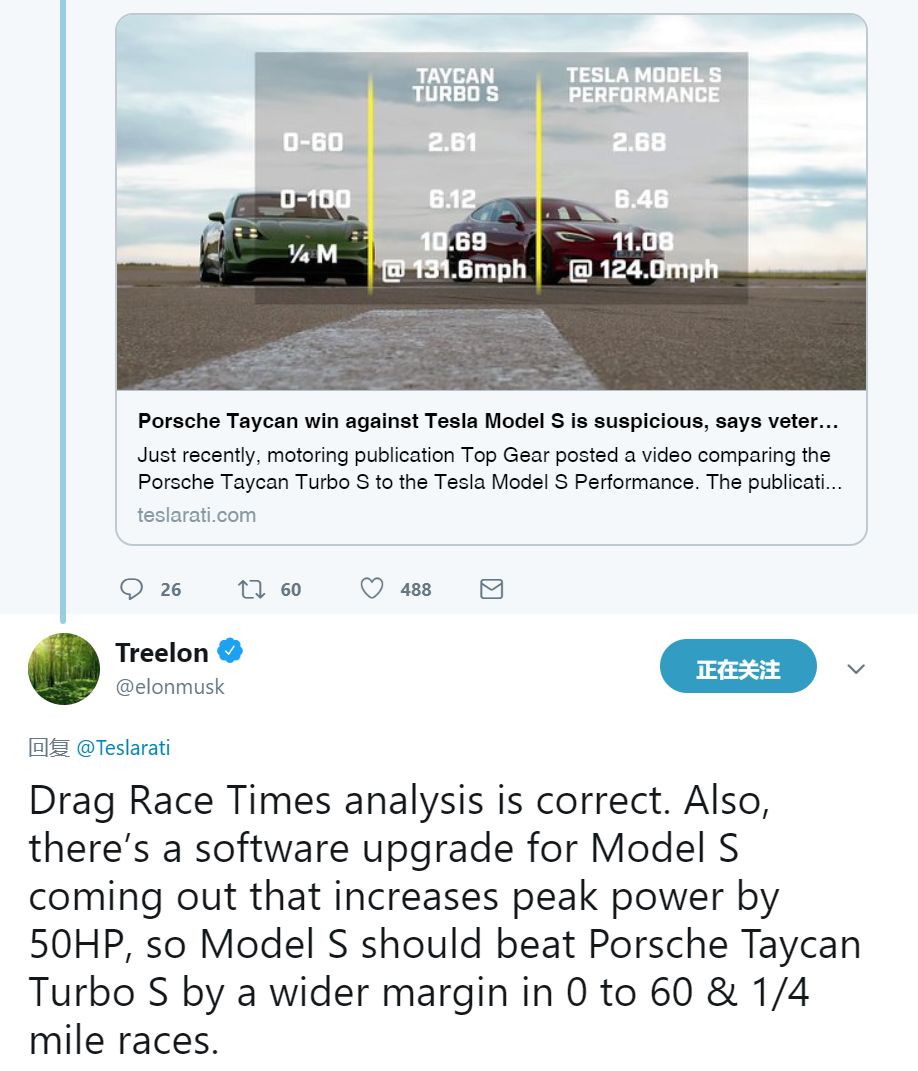
Through whole vehicle OTA, Tesla Model S peak power will be increased by 50 horsepower. Therefore, Model S will have an even greater advantage in both 0-60 mph and quarter-mile drag races.# Top Gear’s Biased Reporting of Electric Cars: Tesla vs. Porsche
Top Gear may have hoped to convey its values that high-performance electric cars not only include Tesla but also Porsche through video. What were the results?
As of now, the video has been viewed over 1 million times, and of the top 20 most upvoted comments in the comment section, 18 expressed dissatisfaction with Top Gear’s distorted facts. One of the comments was as follows:
I like Porsche, and I also like Tesla. But from Top Gear’s falsified report that Porsche won, an era has ended.



This article is a translation by ChatGPT of a Chinese report from 42HOW. If you have any questions about it, please email bd@42how.com.
